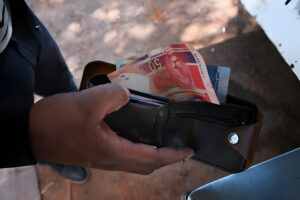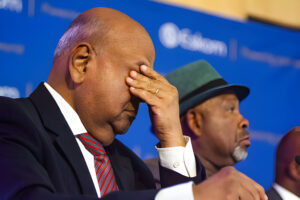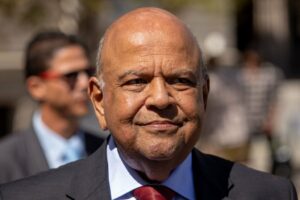A shift towards a common currency among BRICS nations—Brazil, Russia, India, China, and South Africa—would pose significant risks to the South African rand, warns William Gumede, Associate Professor at the University of the Witwatersrand’s School of Governance. Gumede shared his insights during a recent webinar on the subject of BRICS and the concept of “De-Dollarisation.”
The Complex Reality of Foreign Reserves
Contrary to current discourse on a unified BRICS currency, Gumede highlighted the disparities in foreign reserves among member nations. He argued that South Africa’s frail economic growth and the country’s rapid de-industrialisation make it particularly vulnerable within the BRICS framework. “The BRICS countries do not hold each other’s currencies, but prefer ‘safe’ currencies,” Gumede pointed out, mentioning that during the height of the Covid-19 pandemic, some countries even held the Swiss franc and the Australian dollar as safe havens.
Geographical and Policy Divergence
The professor emphasized that the geographical distance between BRICS nations further complicates the prospect of a common currency, drawing a comparison to the more geographically clustered Eurozone countries. The lack of deep-rooted political affiliations within the BRICS coalition adds another layer of complexity, according to Gumede.
Individual Country Concerns
While China’s economy shows promising growth, its trajectory is dampened by political instability. Brazil, on the other hand, faces unique challenges, particularly with the return of President Luiz Inácio Lula da Silva. India is cautious about diving into a common currency agreement that could jeopardize its internal and external economic operations. “China, Brazil, and Russia seem more open to the idea,” Gumede observed, “but India is reluctant to place all its eggs in one basket.”
Central Banks and Political Conflicts
Gumede also cautioned against the feasibility of a common currency in the short term, especially given the current geopolitical climate. “The central banks of some of these countries are downgraded or fear being downgraded for trading with Russia, particularly in the context of the Russia-Ukraine conflict,” he noted.
Membership Quandary
The question of expanding BRICS membership also remains a contentious point. While Russia and China are keen on widening the group to counter Western influence, India remains conservative, focusing on its own currency first. This divergence in approach makes the swift formation of a common currency unlikely, Gumede stated.
Historical Lessons and Market Trust
Last month, Nicky Weimar, Chief Economist at Nedbank, further added to the discussion by suggesting that a common BRICS currency might never materialize without significant financial liberalization from China. She also pointed out that the strength of the U.S. dollar as a global reserve currency is backed by the trust that markets have in the U.S. Federal Reserve, something that cannot be easily replicated by BRICS nations.
For now, the practical challenges, geopolitical dynamics, and divergent economic policies among BRICS countries seem to indicate that the idea of a common currency remains more theoretical than actionable. The discussions continue, but the hurdles are high and the clock is ticking.














